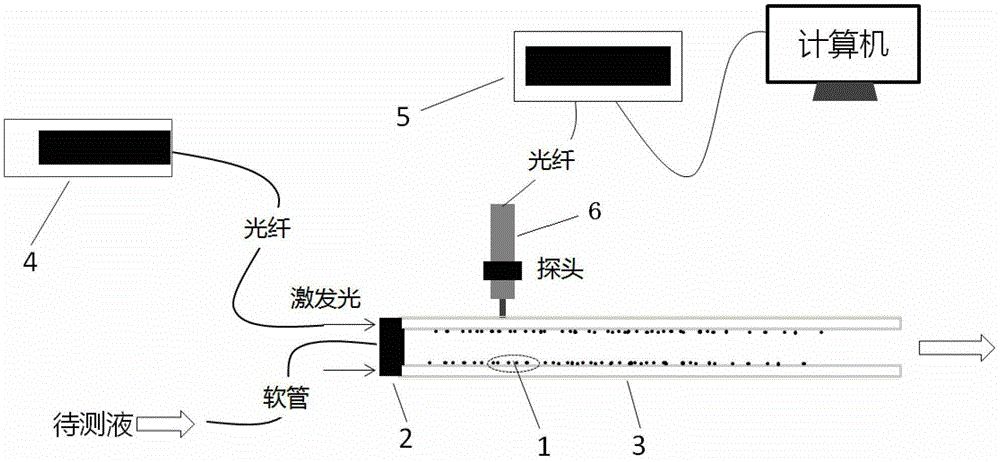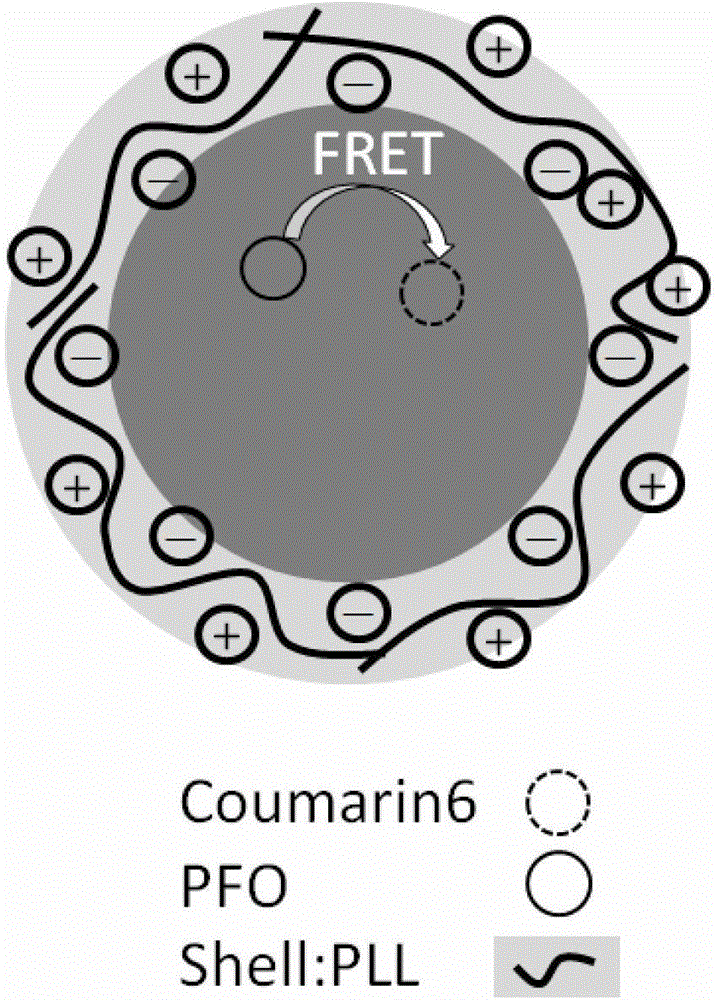A fluorescent capillary biosensor for glucose
A biosensor and capillary technology, applied in the direction of fluorescence/phosphorescence, material excitation analysis, etc., can solve the problems of difficult sample detection and analysis, simple operation process, high experimental cost, etc., to shorten the detection time, reduce background fluorescence, The effect of simplifying steps
- Summary
- Abstract
- Description
- Claims
- Application Information
AI Technical Summary
Problems solved by technology
Method used
Image
Examples
Embodiment Construction
[0036] Such as figure 1 Shown is a structural schematic diagram of a fluorescent glucose capillary biosensor. The fluorescent glucose capillary biosensor includes a nanosensor 1, a capillary coupling 2, a capillary 3, a light source 4, a fiber optic spectrometer 5, and a probe 6. The nano sensor 1 is distributed on the inner wall of the capillary 3, and the capillary coupler 2 is connected to an optical fiber and a hose. The excitation light emitted by the light source 4 can be received through the optical fiber, and the test liquid can be received through the hose. The capillary coupler can simultaneously allow excitation light to enter the capillary wall and solution to enter the capillary cavity. The liquid to be tested and the nanosensor are excited by the evanescent field generated by the excitation light to generate a new fluorescence spectrum that is received by the probe 6, and the probe 6 transmits the received fluorescence spectrum to the fiber optic spectrometer 5 fo...
PUM
 Login to View More
Login to View More Abstract
Description
Claims
Application Information
 Login to View More
Login to View More - R&D
- Intellectual Property
- Life Sciences
- Materials
- Tech Scout
- Unparalleled Data Quality
- Higher Quality Content
- 60% Fewer Hallucinations
Browse by: Latest US Patents, China's latest patents, Technical Efficacy Thesaurus, Application Domain, Technology Topic, Popular Technical Reports.
© 2025 PatSnap. All rights reserved.Legal|Privacy policy|Modern Slavery Act Transparency Statement|Sitemap|About US| Contact US: help@patsnap.com



